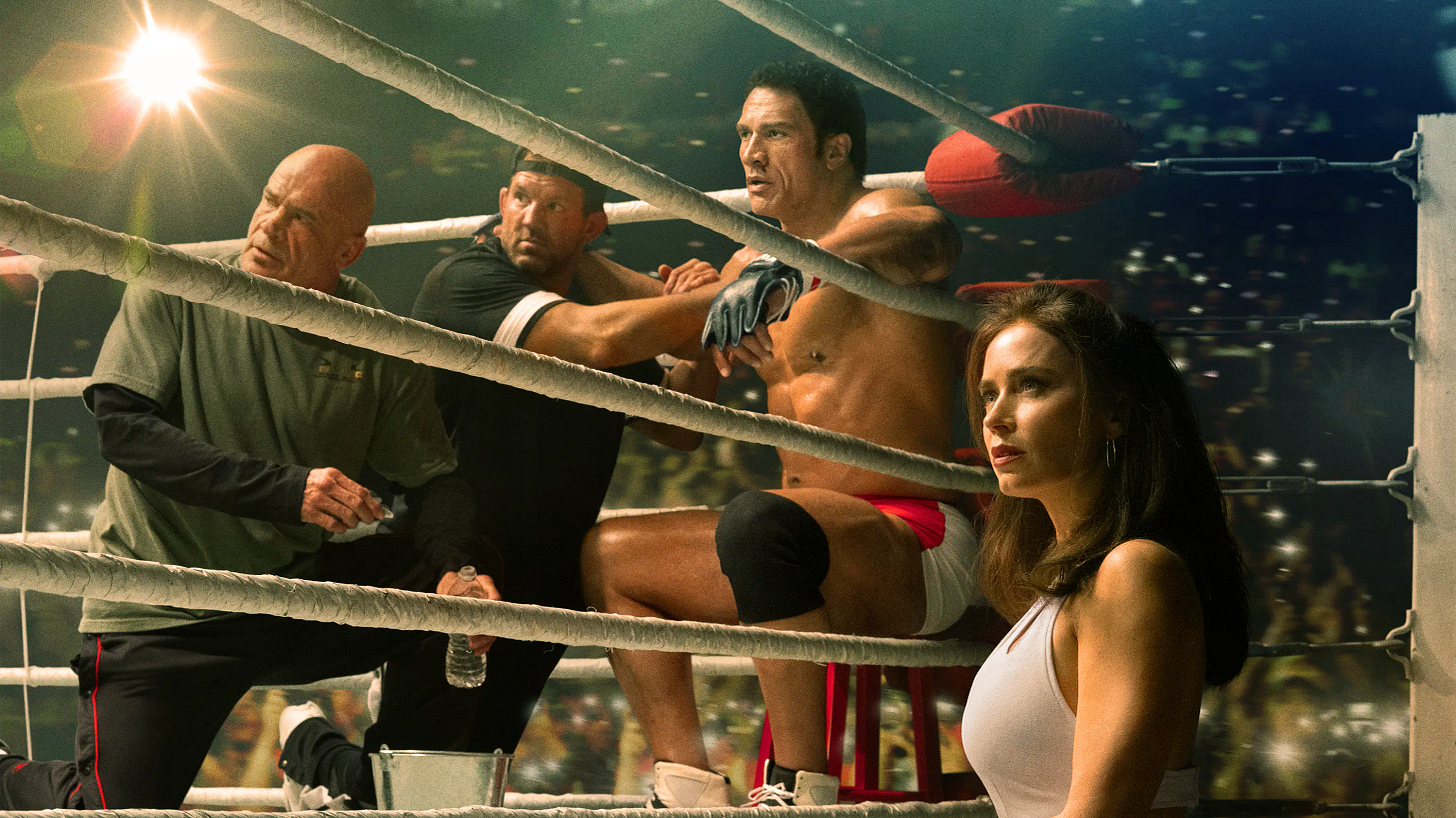The Smashing Machine: A24, Dwayne Johnson, and Why the Fight Never Leaves You
By Travis Brown | BLACK MASS CONFESSIONS “A film about the body, the cage, and everything it takes to keep walking toward both.”
It took me a while to finally sit down and watch A24’s The Smashing Machine. I wanted to give it a fair shake—time to breathe, time for the noise to die down. Now that it’s floating around digital platforms and soon to hit the majors, I figured it was time to write about it. Not as a traditional review, but as an editorial reflection—because this one hit me somewhere different.
This isn’t just a movie about fighting. It’s a film that drags you back into the smell of sweat, leather, and adrenaline. It reminded me why I fell in love with combat sports in the first place—and why that world never truly lets you go.
The First Bell
I grew up on boxing nights at my grandparents’ house. HBO in the background. The glow of the TV painting the walls blue. Sugar Ray Leonard, Tommy Hearns, Hagler, Tyson, Roy Jones Jr., Trinidad, Whitaker, Tarver, and even Amir Khan. I watched all of them. Those nights were sacred.
Boxing was more than a sport—it was cinema.
And martial arts was the script.
From Bruce Lee to Jackie Chan, from Gymkata to Kickboxer, from The Challenge to Lionheart, I studied movement like it was survival—because where I grew up, it kind of was. Fighting wasn’t just entertainment; it was armor.
My First Taste of Combat
My first real introduction to “mixed” martial arts didn’t come from a cage. It came from Sega Genesis—a game called Pit-Fighter in 1990. Three buttons. Gritty realism. Tank tops and sweat. You didn’t need rules; you just needed instinct.
By the time UFC 1 hit Blockbuster, I was hooked. I’d grab my horror tapes, an animated flick, and—if it was still on the shelf—one of those early UFC VHS tapes. Watching sumo wrestlers take on kickboxers felt like a modern-day gladiator myth.
The style clashes were chaos, but they were honest. No script. No second take. Just survival.
The Real World of Fighters
Years later, I’d end up walking out with real fighters—cornering, training, watching from the back while the crowd screamed. I’ve seen the prayer circles, the adrenaline dumps, the quiet before the music hits. And trust me, nothing compares.
I’ve worked with fighters, trained them, written about them, and more importantly—befriended them. There’s a shared understanding that the cage doesn’t care who you are. The fight strips everything down.
That’s why The Smashing Machine resonated with me. It didn’t glamorize that process. It showed the toll—the ache, the exhaustion, the small victories that never feel like enough.
A24’s Approach and The Rock’s Transformation
Directed by Benny Safdie, The Smashing Machine is one of those films that plays like a half-documentary, half-nightmare. It’s messy and textured, blending realism with that Safdie’s chaos—the kind that feels improvised, even when it’s not.
Dwayne Johnson delivers a performance that surprised me for all the right reasons. Not because I doubted him, but because it feels like he finally chose a role that required silence instead of size. He plays Mark Kerr with restraint and heartbreak—proof that even a man built like a mountain can crumble quietly.
And when he’s onscreen with Emily Blunt (as Dawn), the chemistry is jagged, imperfect, real. They love each other and destroy each other in equal measure. It’s not “Hollywood toxic.” It’s human.
Watching Myself in the Mirror
What The Smashing Machine does best is capture the grind—the repetition, the loneliness, the invisible weight. It’s easy to celebrate fighters in highlight reels, but you rarely see the long quiet stretches where their lives fall apart. The film understands that.
Kerr’s story—his addiction, his body breaking down, his need to stay relevant—echoes through anyone who’s ever pushed too far chasing something they thought would save them.
Watching it brought me back to every fighter I’ve met who walked into the cage thinking it’d fix them. It never does. But for a few minutes under the lights, it sure feels like it could.
The Look, the Sound, the Pulse
If I had one gripe, it’s how the film was shot. That grainy aesthetic—it’s an acquired taste. It reminded me of The Iron Claw, another film that lived somewhere between documentary and dream. At times, the grit worked. At others, it distracted.
The music, too—brilliant in parts, clunky in others.
But that’s kind of the point. The fight never looks as clean as the highlight reels.
It’s supposed to be ugly.
That’s why we love it.
The Human Element
What stuck with me most wasn’t the fighting—it was the humanity. Watching Kerr navigate love, shame, and the impossible expectations of being “the best” hit hard. I’ve seen versions of that story play out in real time, in real gyms, with real people who didn’t have a camera crew waiting.
And that’s what The Smashing Machine understands about this world—it’s not about winning. It’s about surviving your own reflection.
Final Thoughts
The Smashing Machine is a reminder of what happens when ego, body, and ambition collide. It’s a love letter to fighters, but also a warning to them.
It’s not perfect. The tone drifts, the texture takes some getting used to, but it’s honest. And that’s more than I can say for most sports dramas.
On the HMU scale, I’d give it a 3.5 out of 5—for the heart, the performances, and for daring to capture what fighting really feels like when no one’s cheering.
This isn’t just a movie about MMA. It’s a mirror for anyone who’s ever fought for something they couldn’t name.
BLACK MASS CONFESSIONS RATING
HMU Review: 3.5/5
Editorial Value: 4/5
Takeaway: Fighting never leaves you—it just changes what you’re fighting for.

